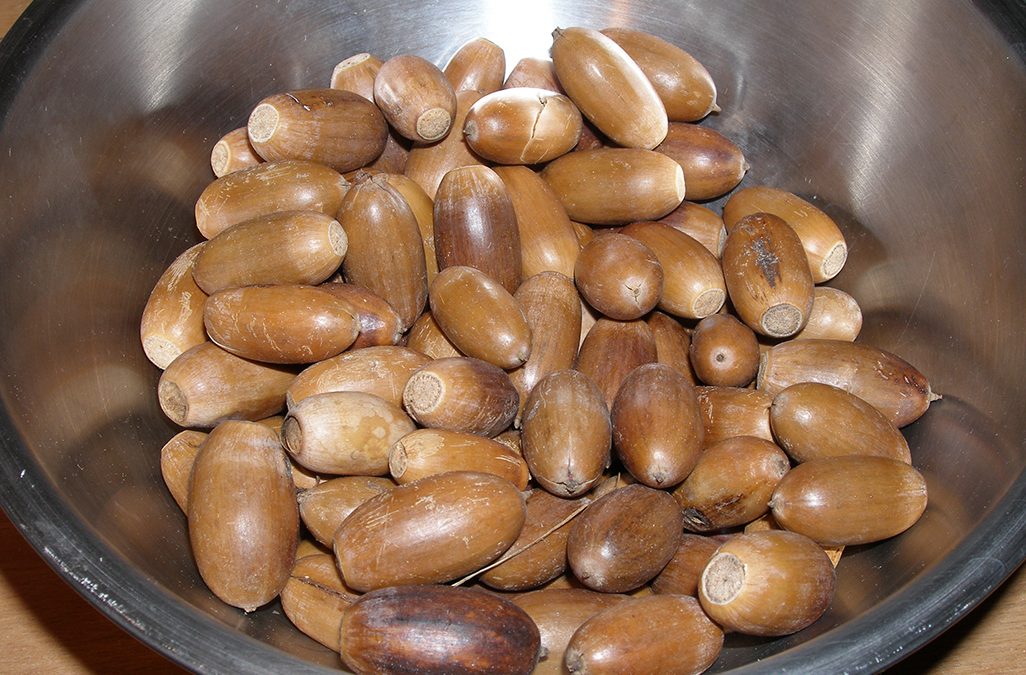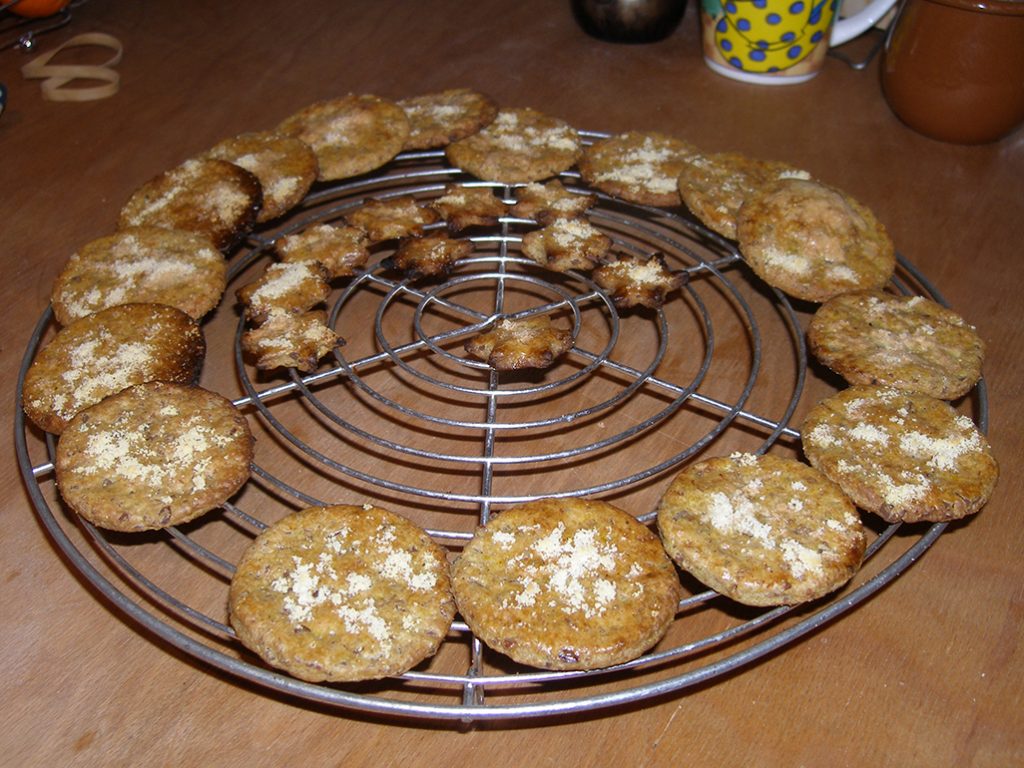
Acorns
I don’t know why I have been ignoring acorns all this time. But this year, out of nowhere, it suddenly struck me that I should give them a try. Oaks are quite plentiful in my region and thus acorns are not in short supply. And so, I unexpectedly found myself filling my pockets with acorns a couple of weeks ago. Acorns actually make for easy foraging – they are plentiful, not prickly and big enough to fill bags without too much effort.
But before you start picking, it may be worth your while to acquaint yourself with the different species that grow in your area. Different species are often found in the same habitat. Oaks (and acorns) come in many different varieties, shapes, and sizes but not all are terribly tasty, (in fact, some taste terrible).
Acorns are rich in tannins, a bitter, acrid substance that was once used for tanning animal hides. Tannins are very astringent and in large amounts, they are toxic to the kidneys, liver, and the entire digestive tract. They also interfere with iron absorption. This is why foragers prefer to search out varieties that are a bit sweeter and lack high levels of tannin. Fortunately, in most parts of Europe, the species that has the lowest tannin concentration is also one of the most common. In the US there is a wide variety of species and all of them, even the bitterest have been used for food.
In the eastern United States, Quercus alba, or common white oak, was generally considered the preferred species to gather, since it is naturally quite sweet. In the Southwest, gamble oak was used, although the acorns are not big. But, just about every kind of acorn has been utilized for food – bitter or not. To make the bitter varieties more palatable, the tannins must be removed. Native people have been very innovative in finding ways to accomplish this task. They used many different methods to render acorns more palatable and to preserve them for later use.
Some indigenous peoples stored the nuts in underground vaults that they would dig near a river. Stored in such vaults the nuts turned completely black but could be kept fresh for years (unless the squirrels should find them). But a more common method is to thoroughly dry or roast the nuts and to store them in jars for later use.
The dried nuts can then be ground into flour as needed. The flour is placed into a finely woven cloth and carefully rinsed to remove the tannins until the water runs clear. Any flour that is not used immediately must be thoroughly dried (e.g. at low temperature in the oven) to prevent it from getting moldy. The flour will ‘cake up’ and must be ground again before use.
Alternatively, you can boil the acorns in several changes of water and then dry them. Gentle roasting will dry them completely. Once thoroughly dry, they can be ground.

Acorn biscuits
Acorns are very nutritious. They contain not only fat and carbohydrates but are also rich in proteins and B vitamins.
There are a surprising number of recipes out there for making acorn goodies – acorn grits, cakes, bread, and soup. Coarsely ground acorns (grits) can be used to replace nuts in many recipes, although they may add rather a lot of crunch. Acorn flour can be used to replace a portion of regular flour in just about any recipe. Mix flours in a ratio of 1:1 or 1:3, depending on how nutty a
My experiment was based on a
Savoury Acorn Biscuits:
Ingredients:
- 150g Acorn
flour
- 150g wholemeal flour
- 100g cold butter
- 1 tsp. curry powder
- pinch of salt
- 1 tbs. creme fraiche
- 2 egg yolks
- 2 – 3 tbs ground parmesan cheese
Place the flours into a bowl. Add the cold butter, in small chunks, and add the curry powder and salt. Add 1 egg yolk and the creme fraiche. Blend all ingredients to create a smooth shortcrust dough. Cover and put into the fridge for 1 hour.
Line a cookie sheet with baking paper and preheat the oven to 200°C (392°F).
Divide dough into two parts and roll out thinly (to approx 3
Cut 4cm cookies (e.g. with a water glass) and transfer to cookie sheet.
Mix second egg yolk with 2 spoons of water and glaze each cookie
Sprinkle with Parmesan cheese
Bake on the middle rack for 15 min until golden brown.

